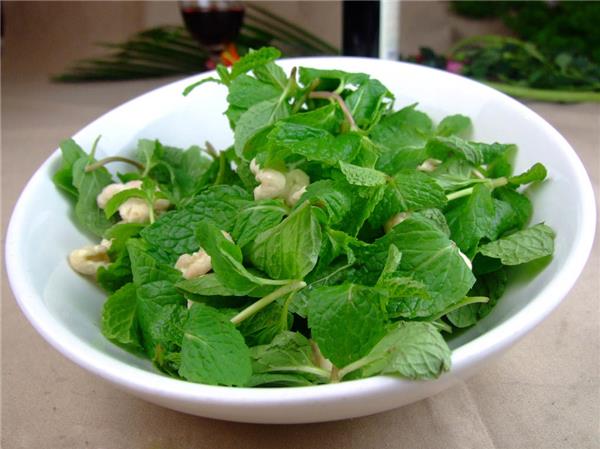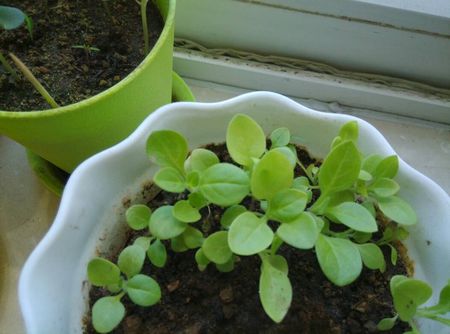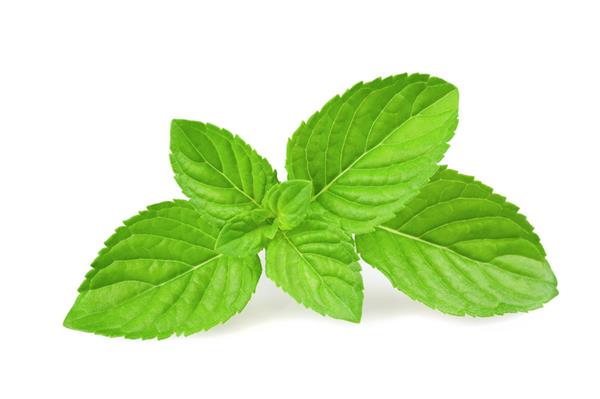[what about the yellowing of mint leaves] how to keep peppermint
What if the peppermint leaves turn yellow? How to keep peppermint? What are the culture methods and precautions of peppermint? Today let's learn more about peppermint. First of all, mint, also known as hairy mint, fragrant mint, is a variety of mint. Peppermint, which grows mainly in western Europe and the western Mediterranean, is a perennial herb, mainly used for cooking and greening.
What if the peppermint leaves turn yellow?
The main reason for the yellowing of peppermint leaves should be problems in watering, lighting and ventilation.

Ways to prevent peppermint leaves from yellowing:
1. Watering: we should pay attention to watering the wrinkled leaf mint. If the soil surface is not dry, it should be watered thoroughly. The water used can be clear water, preferably the rice-washing water at home, which is nutritious and water-saving.
2. Daylighting and ventilation: if the indoor lighting is good, you can put the wrinkled leaf mint in a sunlit place and keep the room ventilated normally. If the daylighting is not good, after placing it indoors for 72 hours, move it to a sunny place for 1-2 days, let it absorb sunlight and breathe, and then move back to continue to use it. Avoid exposure in the hot sun in summer.
3. Pruning: during the period of vigorous plant growth, it is best to prune once a week to cut off the weak and withered branches. After pruning, spray "new high-fat membrane" and put it in a sunny place, which is conducive to the healing of cut tissue and continue to sprout new branches.

Matters needing attention to mint
Peppermint plants, usually 40 to 100 cm high, are propagated through underground rhizomes, bloom in the middle and late summer, and the flowers are usually lavender or pink.
The role of mint
Mint is a popular herb and is usually used as an ornamental. In sufficient sunlight to a slightly cool environment, it can promote its growth. Its leaves can be used to make peppermint jelly or steamed powder. It can also be used as peppermint tea, as an ornament or as a salad.
Key points of cultivation and cultivation
Temperature: like warm climate. The rhizome sprouted and emerged at 5-6 °, and the optimum temperature for growth was 20-30 ℃ 0. Although the plant withered when the temperature dropped to about 2 ℃: and entered into dormancy, the underground stem could survive the winter safely at-20 ℃. In the second year, it could germinate new branches and grow again from the rhizome.

Light: like plenty of sunshine, more resistant to shade. Sufficient light is conducive to the formation of aroma, such as indoor placement, should be moved to a sunny place after 3 days, and then put back indoors. 、
Watering: like the moist soil environment, more moisture-resistant. During the growth period, it should be fully watered to keep the basin soil moist. However, avoid wet waterlogging, basin soil is too wet will lead to overgrowth of plants, thinning of leaves, poor development of root blossoms, and the phenomenon of shedding of lower leaves, and vulnerable to disease infection. The stagnant water in the basin should be emptied in time after rain. The usual watering should hold the principle of "no dry, no watering, watering thoroughly". When plants go dormant in winter, less watering should be done.
Fertilizing: like to be fat. In addition to the need to apply organic fertilizer as base fertilizer, fertilizer was applied once a month during the growing period, with nitrogen as the main fertilizer and proper scale potassium fertilizer. If the branches and leaves need to be harvested during the growing period, topdressing should be carried out during the harvest to promote the plant to restore a good plant shape. .:
Pruning: a money cut is carried out in combination with turning the basin every spring to promote the growth of branches and leaves. If the plant does not grow vigorously, it should be renewed and pruned to restore the strong growth of the plant. In the growing season, when the stem is too high and affects the ornamental, it is feasible to pick the core, or use paclobutrazol solution for foliar spraying to control the height.
Turn the basin: because of the fast growth, the basin should be turned once every spring. It is not strict to the soil, but like the neutral or alkaline soil which is fertile and well drained. In the soil? It can be planted in the range of 5.3 ~ 8.3, but it grows better when it is 6.5 ~ 7.5. Continuous cropping is not allowed to be planted on the ground. Pot substrate can be prepared with rotten leaf soil, garden soil, rice bran ash or coarse sand and other materials.

Pest control: there are diseases and insect pests such as scab, white star disease, spot blight, small land tiger, Spodoptera litura and so on. If the branches and leaves need to be eaten or soaked, toxic pesticides should be avoided.
Efficacy and function of peppermint
It tastes bitter, but it is cold. Returning to the lung and liver channel, it has the effects of diverging wind-heat, clearing the throat, relieving rash and detoxification, soothing the liver and relieving depression and relieving itching. It is suitable for cold and fever, headache, sore throat, no sweating, wind-fire red eyes, rubella, skin itching, hernia pain, dysentery and dysentery. Topical use has a slight analgesic effect, for neuralgia and so on.
1. Stimulation and inhibition of nerves
Peppermint has the effect of stimulating the central nervous system, burning and cold sensation on the skin, while inhibiting and paralyzing sensory nerve endings; therefore, it can be used as an anti-irritant and skin stimulant. It not only has anti-allergic and antipruritic effects on skin itching, but also has obvious relieving and analgesic effects on neuralgia and rheumatic arthralgia.
two。 Anti-inflammatory and antibacterial
Peppermint has desensitization, anti-inflammatory and antibacterial effect on mosquito bite skin, obvious antitussive, anti-inflammatory and bacteriostatic effect on upper respiratory tract infection, and anti-swelling, anti-inflammatory and antibacterial effect on hemorrhoids and anal fissure.
3. Invigorate the stomach and dispel wind
The prescription containing peppermint products in the mouth has an exciting effect on the taste nerve and olfactory nerve. It has hot feeling and stimulating effect on oral mucosa, can promote oral salivation, increase appetite, increase blood supply of gastric mucosa, and improve digestive function. It is beneficial to the treatment of food accumulation and relieving epigastric stagnation. It can also treat hiccups and spastic stomachache. In addition, peppermint also has a good effect of expelling wind in the intestine, which can reduce intestinal inflation, relieve intestinal muscle peristalsis, and slow down intestinal colic.
4. Fragrant seasoning
Mainly use the cool and pleasant smell of peppermint to cover up and improve the discomfort of some drugs with peculiar smell and difficult to swallow.
External use has a slight analgesic effect, for neuralgia and so on.
1. Stimulation and inhibition of nerves
Peppermint has the effect of stimulating the central nervous system, burning and cold sensation on the skin, while inhibiting and paralyzing sensory nerve endings; therefore, it can be used as an anti-irritant and skin stimulant. It not only has anti-allergic and antipruritic effects on skin itching, but also has obvious relieving and analgesic effects on neuralgia and rheumatic arthralgia.
two。 Anti-inflammatory and antibacterial
Peppermint has desensitization, anti-inflammatory and antibacterial effect on mosquito bite skin, obvious antitussive, anti-inflammatory and bacteriostatic effect on upper respiratory tract infection, and anti-swelling, anti-inflammatory and antibacterial effect on hemorrhoids and anal fissure.
3. Invigorate the stomach and dispel wind
The prescription containing peppermint products in the mouth has an exciting effect on the taste nerve and olfactory nerve. It has hot feeling and stimulating effect on oral mucosa, can promote oral salivation, increase appetite, increase blood supply of gastric mucosa, and improve digestive function. It is beneficial to the treatment of food accumulation and relieving epigastric stagnation. It can also treat hiccups and spastic stomachache. In addition, peppermint also has a good effect of expelling wind in the intestine, which can reduce intestinal inflation, relieve intestinal muscle peristalsis, and slow down intestinal colic.
4. Fragrant seasoning
Mainly use the cool and pleasant smell of peppermint to cover up and improve the discomfort of some drugs with peculiar smell and difficult to swallow.
- Prev

[are hyacinth flowers poisonous?] how about keeping hyacinth flowers?
[are hyacinth flowers poisonous?] how about keeping hyacinth flowers?
- Next

Matters needing attention in the Culture of Magnolia Magnolia what is Magnolia?
Matters needing attention in the Culture of Magnolia Magnolia what is Magnolia?
Related
- Wuhan Hospital Iron Tree Blooming Result Was Instantly Frightened by the Gardener Master
- Which variety of camellia is the most fragrant and best? Which one do you like best?
- What is the small blue coat, the breeding methods and matters needing attention of the succulent plant
- Dormancy time and maintenance management of succulent plants during dormancy
- Minas succulent how to raise, Minas succulent plant pictures
- What are the varieties of winter succulent plants
- How to raise succulent plants in twelve rolls? let's take a look at some experience of breeding twelve rolls.
- Attention should be paid to water control for succulent plants during dormant period (winter and summer)
- Watering experience of twelve rolls of succulent plants
- Techniques for fertilizing succulent plants. An article will let you know how to fertilize succulent plants.

